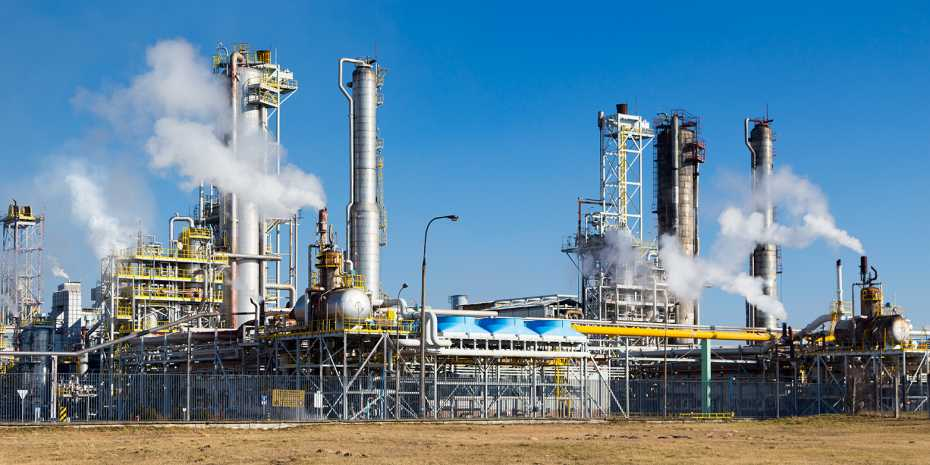Apr 7 2020
The Federal Council in Switzerland has made a resolution to make the nation carbon-neutral by 2050. As far as the vehicular traffic and the whole power industry are concerned, this decision may appear to be rather difficult but certainly not impossible—for instance, with the select use of carbon-neutral energy sources and systematic electrification.
 CO2 emissions from the chemical industry contribute significantly to climate change. Image Credit: Shutterstock.
CO2 emissions from the chemical industry contribute significantly to climate change. Image Credit: Shutterstock.
The chemical industry, in particular, will find it more difficult to make this kind of switch. One of the main concerns for a majority of other industrial sectors is their energy efficiency, but the chemical sector is also expected to deal with the question of raw materials.
Polymers, plastics, synthetic textile fibres and medicines all contain carbon. It has to come from somewhere.
Marco Mazzotti, Professor of Process Engineering, ETH Zurich
In the current scenario, oil and natural gas account for the majority of this carbon. At the time of production, and when the chemical products are decomposed or burned towards the end of their life, they discharge CO2 gas.
Now using methanol production and concrete figures as a case study, Mazzotti and colleagues from Utrecht University and ETH Zurich have systematically compared a variety of methods that aim to bring down the net CO2 emissions from the chemical sector to zero.
The major conclusion reached from this latest study is that the aim of attaining net-zero CO2 emissions in the chemical sector can actually be achieved.
But all the methods examined by the study for attaining the target of net-zero CO2 emissions include both pros and cons, which manifest themselves differently in different parts of the globe. Moreover, all three concepts demand additional energy (in the form of electricity) when compared to that of the existing production methods.
Capture CO2 or Use Biomass
In one technique, fossil resources are continuously used as raw materials, while CO2 emissions are systematically captured and sequestered underground through a process called carbon capture and storage (CCS). A major benefit here is that present-day industrial production processes need not be modified. But the storage locations should be appropriate in terms of their geology, providing—for instance—deep sedimentary layers containing saltwater. But such locations do not exist anywhere in the world.
In another technique, the industry can use carbon obtained from the CO2 gas that was already captured from industrial waste gases or the air. This process is known as carbon capture and utilization (CCU). The hydrogen needed for chemical products would be acquired from water utilizing electricity. This method would involve an extensive upgrade of the chemical production procedure and the reconstruction of massive parts of the industrial infrastructure. It also needs an incredibly large amount of electricity, that is, 6 to 10 times more than that of the CCS method.
This method can be recommended only in countries with a carbon-neutral electricity mix. We clearly demonstrate that using large quantities of electricity from coal or gas-fired power stations would, in fact, be much worse for the climate than the current production method based on fossil fuels.
Marco Mazzotti, Professor of Process Engineering, ETH Zurich
The last option would be to utilize biomass (such as wood, oil plants, and sugar plants) as the raw materials for the chemical sector. While this technique requires less amounts of electricity when compared to other approaches, it involves highly intensive land use to develop the crops—needing 40 to 240 times more land than that of other methods.
The Future of Flying
Mazzotti and his colleagues based their research on the production of methanol, which is analogous to the process used for generating fuels. Thus, the researchers’ study also informs the discussion regarding upcoming aircraft fuels, as Mazzotti pointed out: “We hear it time and again, even from experts, that the only way aviation can become carbon-neutral is through the use of synthetic fuels. But that’s not true.”
Synthetic fuel production is a highly energy-intensive procedure. If electricity from gas-fired power stations or coal were to be utilized for this purpose, then synthetic fuels would have an even larger carbon footprint when compared to that of fossil fuels.
This new research demonstrates that at least two practical alternatives are available to synthetic fuels: the fuels could be acquired from biomass, or the aviation sector can continue to utilize fossil fuels if the CO2 released by airplanes were captured and sequestered elsewhere.
The study was funded by the Swiss Federal Office of Energy and the Swiss Competence Center for Energy Research – Efficiency of Industrial Processes (SCCER-EIP).